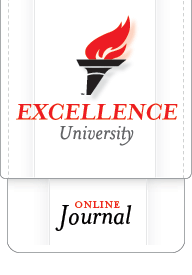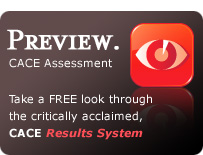Self-Mastery Tip: Optimizing Self-Esteem
January 12th, 2010
Experiencing the extremes of low self-esteem (sometimes referred to as “self-doubt”) and over-blown self-esteem (sometime referred to as “arrogant pride”) can decrease our ability to relate to ourselves, others and our environment in realistic, effective and satisfying ways. The more we can dwell in between these extremes (sometimes thought about as a state of self-confidence mixed with awareness of one’s limitations), the more influence we have over our thoughts, feelings and behaviors.
Optimized self-esteem is often brought about by affirming our strengths (without overestimating them) while simultaneously understanding our weaknesses (without allowing our awareness of weaknesses to influence us to underestimate our worth as people). Here are some methods people have used to promote a balance between self-doubt and arrogant pride:
- To help balance out self-doubt, get in touch with your “Fueling Forces.” Fueling Forces are activities, places or people that help you feel physically and/or emotionally stronger. It can be helpful to identify what fuels you and goal-set to be around these forces more frequently.
- To help balance out arrogant pride, become more aware of your weaknesses and embrace them. Imperfections are often what help ground us and connect us to others while continuously motivating us to continue to learn new ways to improve. It can be useful to identify 3-5 areas of weakness in ourselves in order to stay aware that we are not perfect (like everyone else) and to become comfortable expressing these imperfections to others when appropriate. This can help promote a culture of genuineness or candor in our personal and professional lives.
- To stay balanced: Stay aware of areas of strength and areas of imperfection and affirm both regularly. It can be helpful to keep a list of areas where we are strong and areas where we have significant limitations. These lists are likely to change over time (and with attention and training), but the balance between self-doubt and arrogant pride doesn’t have to. There will always be areas where we are strong and areas where we do not excel. Staying aware of that fact can help optimize self-esteem and keep us grounded in reality (and connected to ourselves and others, too).
An important note about these sorts of exercises: It can be critical to be very careful to avoid punishing candor in the areas above (for example, calling ourselves “weak” or “big-headed” while performing the exercises). If we use any of the strengths or weaknesses we become aware of against ourselves (or others, if we are doing this in a group format), it can actually serve to hurt the chances that we will be honest in the future. This is why I often recommend using the exercises listed above in conjunction with exercises to promote “Peace of Mind.”
NOTE TO THOSE USING THE MISSION FULFILLMENT SYSTEM: You can work toward optimizing your self-esteem by adding a new Objective to your system by using the “Add New Item” link (for example, “Optimize my self-esteem”). You can then develop a SMART Goal related to that new Objective by using the “Add Subitem” link to the far right of the new Objective (for example, “Make a list of my strengths and limitations and reflect on it weekly without judging myself harshly.”).
FOR THOSE WHO ARE NOT ON THE MISSION FULFILLMENT SYSTEM: Click here to for more information and click here to sign up.
FINAL NOTE: If you were linked to this article by a video or email, please return to that link and proceed with any other instructions that you deem helpful. For more Execution Excellence tips and tools visit our site at: www.excellenceuniversity.net
Article Filed under: 1. Self-Mastery Tips



2 Comments Add your own
1. Lindsey | August 10th, 2014 at 1:02 pm
I love this article because it captures the essence of my goal for 2014: to be more balanced. And I have found that this balance all begins within the self. Realizing that I have both strengths and weaknesses has helped me be realistic about what I can do and what I need to work on. It has helped me not castigate myself when I can’t do something perfectly because it’s not one of my strengths, but it also has helped me to not blow one of my strengths out of proportion. I think being aware of our strengths and weaknesses helps us to remain humble, but also to move on when a mistake happens. There is no need to beat yourself up if an accident happens, we are human. Similarly, there is no need to place yourself on a pedestal above others for doing something well. It’s all about being balanced, and if you find that balance, and reaffirm it, then it’s very rewarding.
I have also found that knowing this balance helps me mitigate other’s opinions or criticisms of me. Because I know myself and what flaws and strengths I possess, I do not need to be “reaffirmed” by others or “add” to my list. I know myself and that’s enough for me.
2. Crystal Agosto | March 19th, 2015 at 12:12 pm
This article talks about optimizing self-esteem by balancing self-doubt and arrogance. In order to optimize self-esteem it is important to remind ourselves of our weaknesses and embrace them, while also surrounding ourselves with places or people that help us feel stronger. It is important to remember that recognizing your weakness does not mean punishing yourself or making fun of yourself. Everyone has both weaknesses and strengths and it is important to remain aware of both. This relates to me because I have sometimes had a problem balancing my self-esteem and tend towards self-doubt rather than arrogance. It is a good idea to reaffirm yourself and maintain balance.
Trackback this post | Subscribe to comments RSS Feed
Leave a Comment
Some HTML allowed:
<a href="" title=""> <abbr title=""> <acronym title=""> <b> <blockquote cite=""> <cite> <code> <del datetime=""> <em> <i> <q cite=""> <s> <strike> <strong>